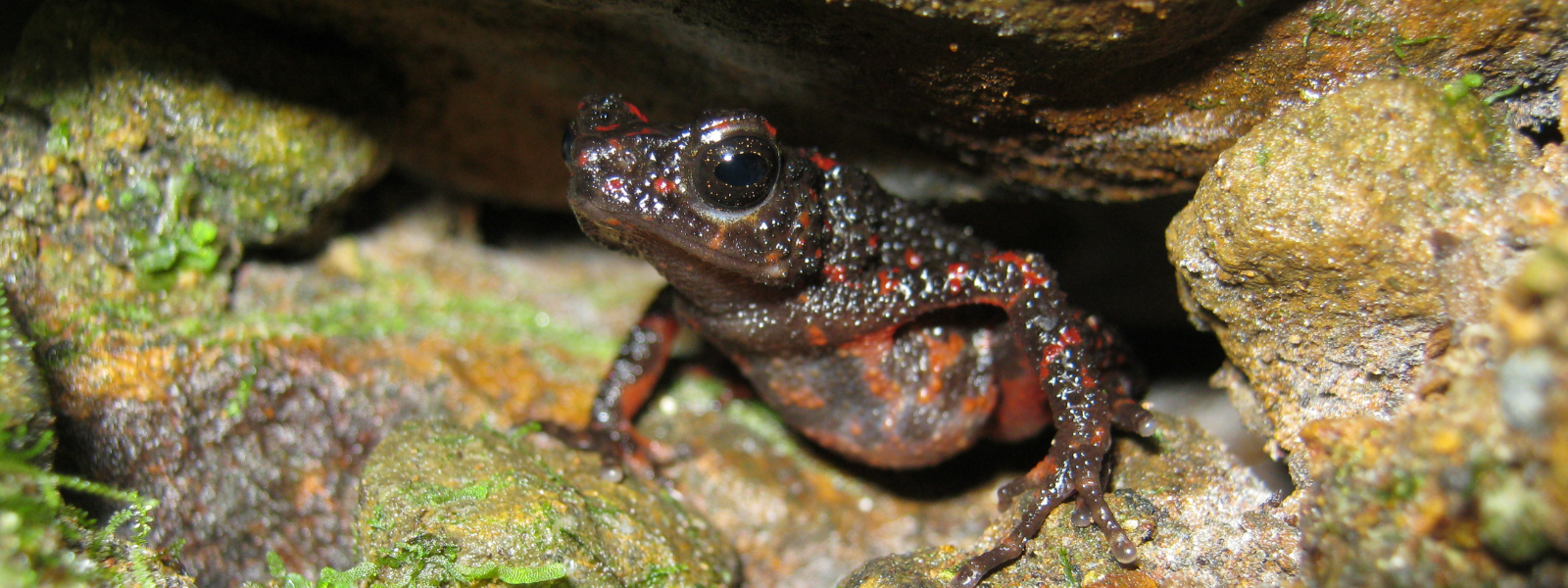Meet an Amphibian Biologist: An Interview with Nathan Rusli, Indonesia Herpetofauna Foundation

With approximately a third of amphibians threatened with extinction globally, it is crucial we champion the importance and bring attention to the threats faced by this unique group of animals.
Amphibian Week is celebrated during the first week of May every year. This year we invite you to meet amphibian biologist Nathan Rusli, Executive Director of ASAP Partner Indonesia Herpetofauna Foundation, as he shares why and how we can and should be champions for amphibian conservation.
Why is it important to conserve amphibians?
Every organism on Earth has an important role to play to sustain the fragile ecosystems on this planet – including amphibians. There are many reasons why amphibians are important to us, such as the fact that they provide a free pest-control service, serve as indicators of water quality, and some species have even contributed greatly to medical research! Without them, our ecosystems would collapse, thus having a detrimental effect on humankind. But aside from the rational facts mentioned above, I personally think the most important reason to conserve amphibians, or any other taxa, is that they are just fascinating in their own way, and it would be a shame if they were to be wiped off the face of the Earth. Once a species goes extinct, it’s lost forever – there’s no “undo” button. For me, the intrinsic values of amphibians are a good enough reason to conserve these wonderful animals.
What does an amphibian conservationist do?
As the name implies, an amphibian conservationist conserves amphibians – conducting efforts to reduce the risk of extinction. Amphibian conservation is a multidisciplinary effort, requiring collaborations between people and organizations with a variety of expertise. An amphibian conservationist may take the form of a scientist studying the ecology of frogs, or perhaps a social psychologist trying to understand the relationship between humans and the amphibians around them. They could also be a zookeeper, caring for a breeding population of endangered newts for potential reintroduction, a village chief who persuades farmers to stop using pesticides, or perhaps even a graphic designer creating educational content to raise awareness for amphibian conservation. You don’t need a fancy degree to be an amphibian conservationist – everyone can contribute in their own unique way!
What inspired you to become an amphibian conservationist?
Growing up in Indonesia, I’ve been exposed to a wonderful selection of amphibians from a young age. As a small boy, I remember collecting tadpoles from a local ditch and watching them turn into froglets – this was one of my favourite childhood activities. I have fond memories of chasing frogs in swamps, pulling snakes out of crab holes, and staring in awe at a crocodile gracefully patrolling his domain. Amphibians and reptiles have kept me fascinated throughout my youth, and in this regard, I think I’ll never grow up. The feeling of constant curiosity sparked a burning desire in me to learn as much as I could about these animals. In doing so, I experienced first-hand the decline of my beloved childhood friends, happening right before my very eyes. After all the precious hours of joy and excitement amphibians have provided me, could I just stand by and watch them disappear? I don’t think so.
Tell us more about IHF’s conservation efforts for Indonesia’s threatened amphibian species.
This year, the Indonesia Herpetofauna Foundation (IHF) is involved in two amphibian projects. The first one is a baseline study to understand the ecology, distribution, and threats of the endangered Trilaksono’s bush frog (Chirixalus trilaksonoi). This data will then allow us to prepare a science-based conservation strategy, in order to mitigate the extinction risk of the species. Secondly, we are assisting a project led by Dr. Mirza Kusrini from IPB University, who is conducting multiple studies and conservation efforts for the critically endangered bleeding toad (Leptophryne cruentata). Due to our experience on the captive management of amphibians and reptiles at the former Ciliwung Herpetarium (which closed in June 2021), we will be focusing mainly on the ex-situ components of this project.
- Read more about Amphibian Week, organised by Amphibian Survival Alliance (ASA) and Partners in Amphibian and Reptile Conservation (PARC)
- Read about the Indonesia Herpetofauna Foundation
Featured image by Arief Tajalli

